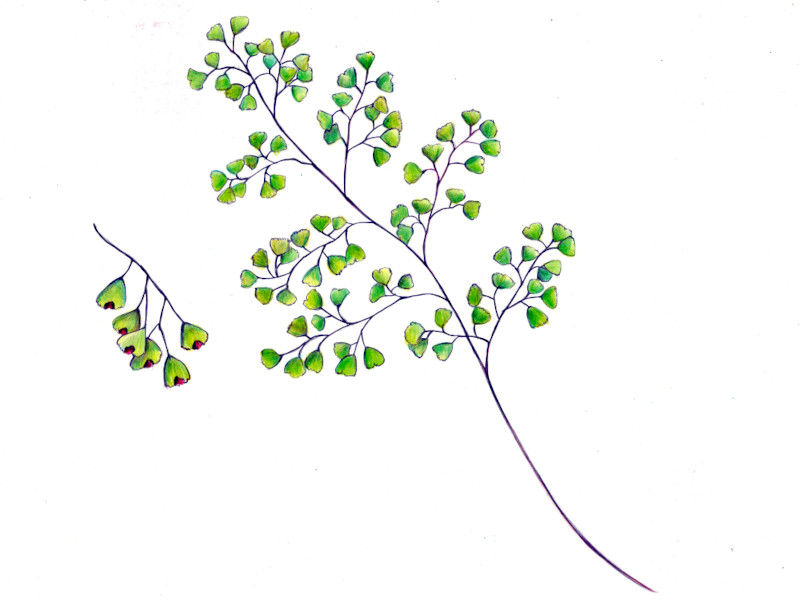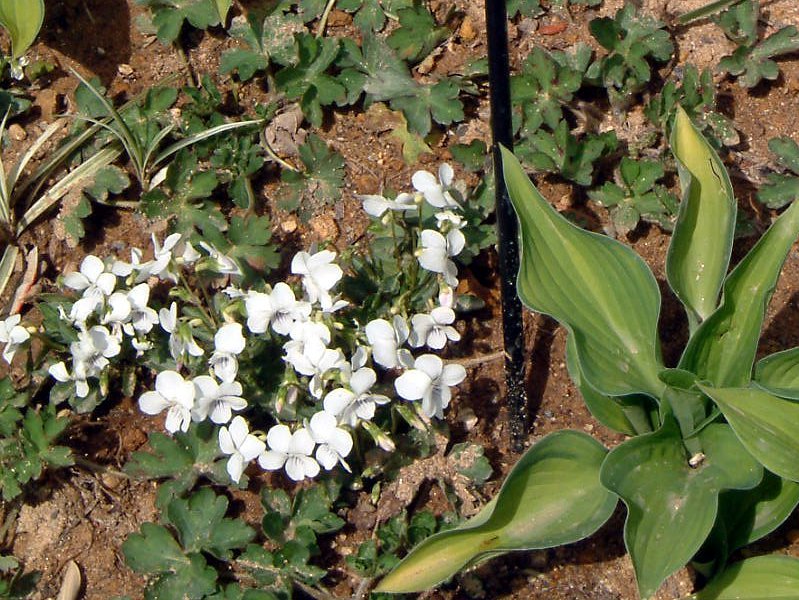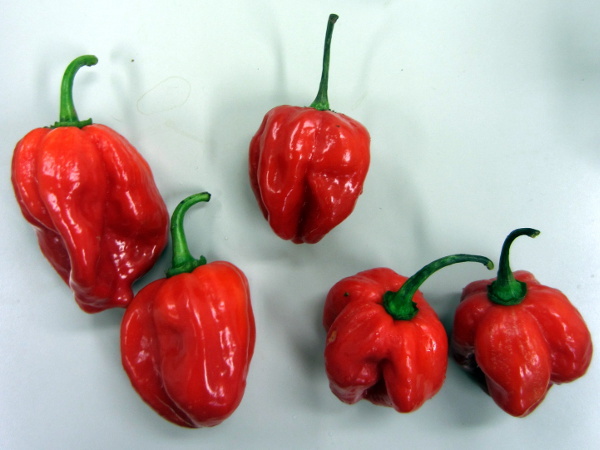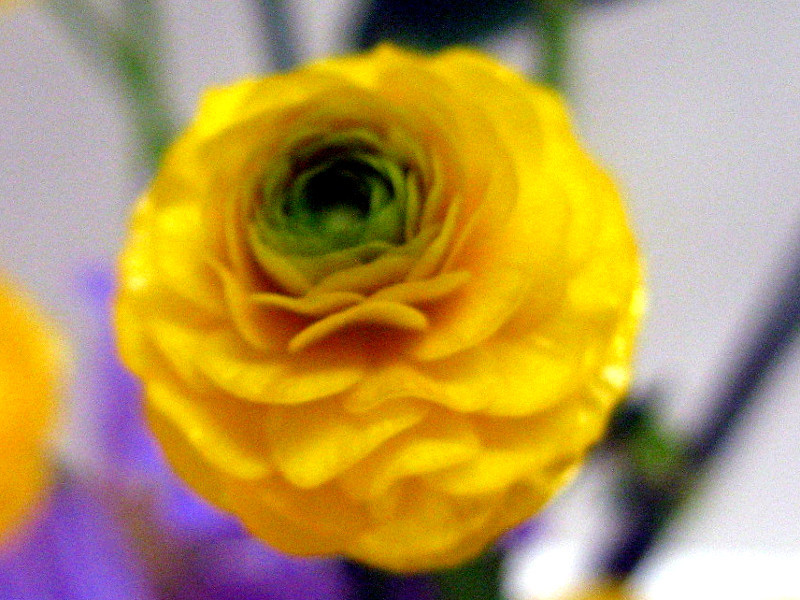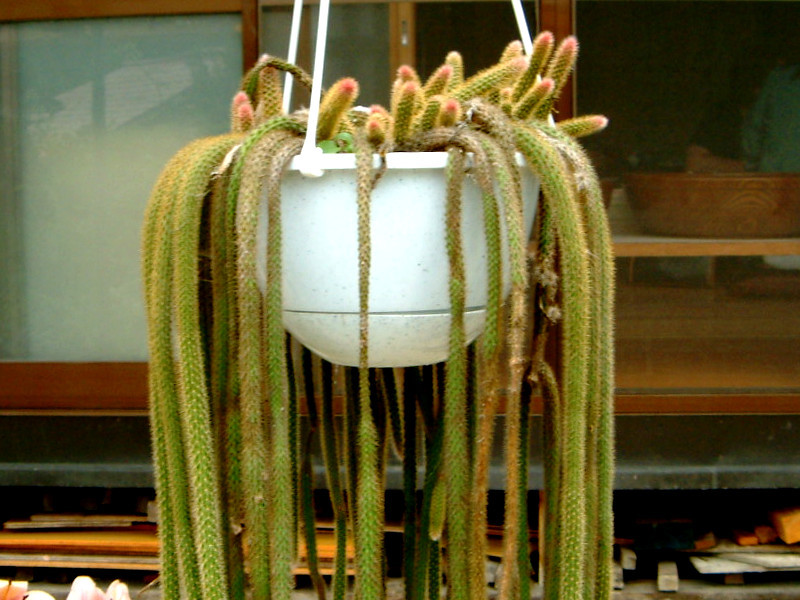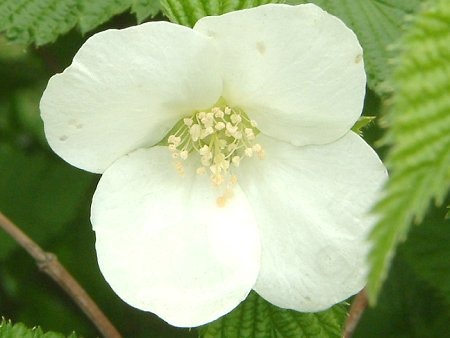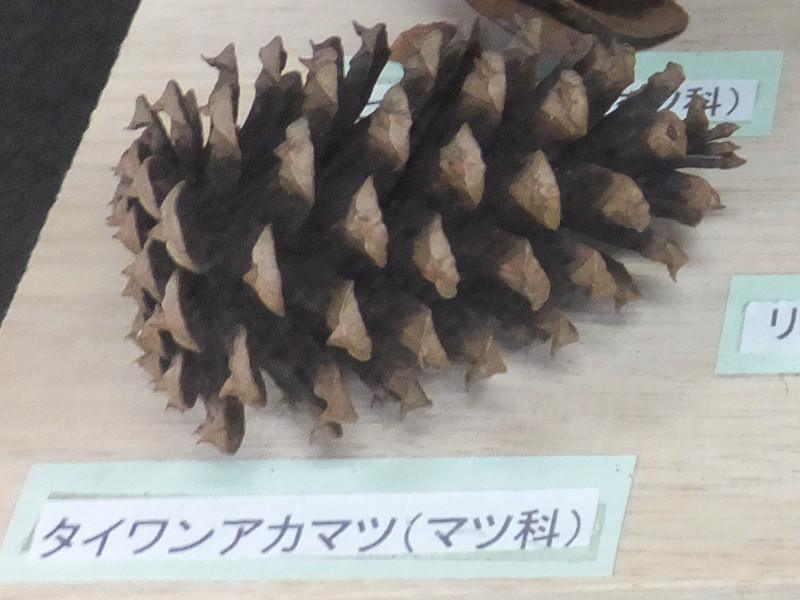Hakone fern
- Flower nameHakone fern
- Scientific nameAdiantum monochlamys
- Alias箱根羊歯, Adiantum
- Place of originJapan, Korean Peninsula, China, Taiwan
- Place of floweringLow mountains, Bonsai, Potted flower, Ornamental plants
- Flowering season
What is Hakone fern
Hakone fern (scientific name: Adiantum monochlamys) is an evergreen perennial fern in the family Pteridaceae, native to Japan, the Korean Peninsula, China, and Taiwan. It grows wild on rocks and cliffs in the mountains of Honshu, Shikoku, and Kyushu. It grows in damp rocky areas with short rhizomes that crawl horizontally and expand three times with pinnate compound leaves hanging downwards. Its stem is thin, black and stiff. Its leaves are three times pinnate compound, with a 10-20 cm petiole ending in an unglazed, green, heart-shaped lobule 20-40 cm long. The leaf margins are serrated. Its petioles and leaf axils are bound together to form a small broom. It is similar to the borai fern, but more difficult to cultivate.
Origin of Japanese name
The Japanese name "Hakone yosho" comes from the fact that this fern was collected in Hakone. In the Edo period (1603-1867), Dr. Engelbert Kämpfer (September 16, 1651-November 2, 1716), a German physician and botanist, learned in 1691 that people were collecting this herb on Hakone Mountain as a pre-natal and post-natal herb, and reported his own collection. In 1691, he learned that people were collecting this herb on Mt.
Common name: Hakone fern, scientific name: Adiantum monochlamys Eaton, also known as Adiantum monochlamys,, hakone-sou, ginkgo-shinobu, Origin: Japan, Korean Peninsula, China, Taiwan, Habitat Distribution: Honshu, Shikoku, Kyushu, Living Environment: Rocks and cliffs in mountainous areas, Plant height: cm, Petiole length: 10-20 cm, Petiole texture: dark brown and stiff, Leaf color: glossy green, Leaf length: 20-40 cm, Leaf shape: 3 times pinnate compound leaf, Small leaf shape: inverted triangle, Heart shape, Uses: ornamental plant, shade garden, pre and post-natal herb, small broom.
